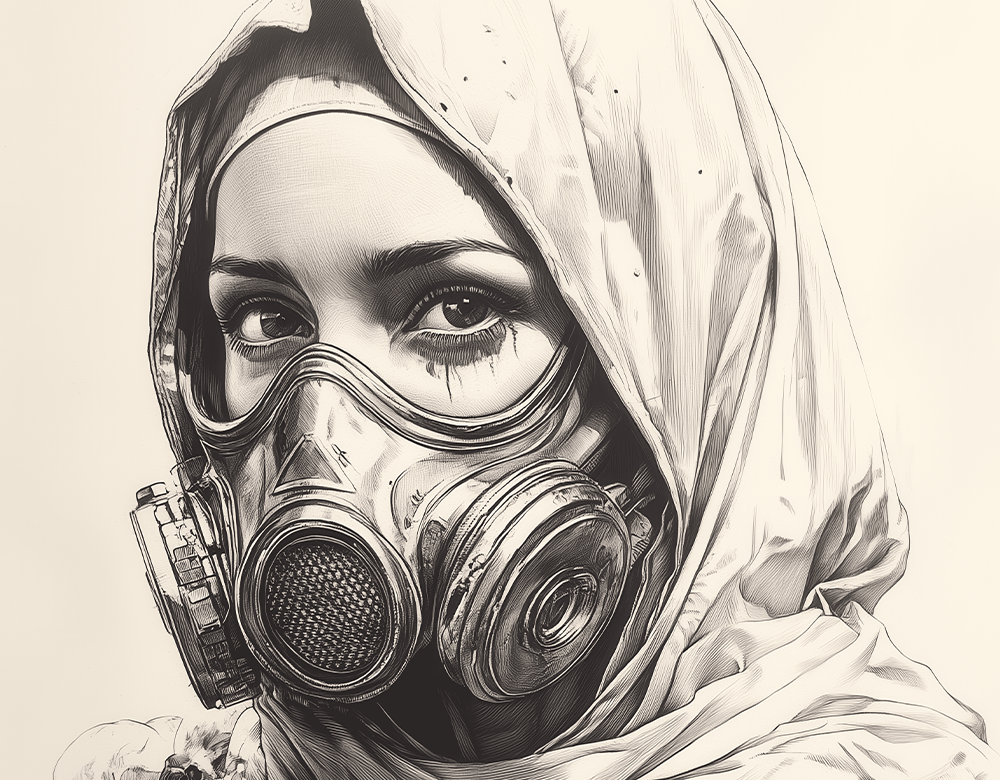Borderline Infernos

Can you tell us about your journey into digital art and photography? What inspired you to choose these mediums?
My journey into digital art and photography began with a fascination for storytelling and the ability to capture moments that transcend reality. I was drawn to photography because of its power to freeze time and evoke emotions, while digital art allowed me to break free from the constraints of the physical world and create entirely new realities. The combination of these mediums felt like a natural progression, as they enabled me to merge the tangible with the imaginary. I was inspired by the works of surrealists like Salvador Dalí and contemporary digital artists who pushed the boundaries of what art could be.
Your works often incorporate surreal and dystopian elements. What themes or emotions are you trying to convey through your art?
I aim to explore themes of impermanence, transformation, and the fragility of existence. The surreal and dystopian elements in my work serve as metaphors for the complexities of the human experience—our fears, hopes, and the tension between progress and destruction. I want to evoke a sense of unease but also curiosity, encouraging viewers to question the world around them and their place within it. Emotions like nostalgia, alienation, and resilience often emerge in my pieces, reflecting the duality of beauty and decay.
How does your training at the EFTI academy and Miguel Hernandez University influence your current creative process?
My training at EFTI and Miguel Hernandez University was foundational in shaping my technical skills and conceptual approach. At EFTI, I honed my photographic techniques and learned to see the world through a more critical lens, while at Miguel Hernandez University, I delved deeper into the theoretical and philosophical aspects of art. These experiences taught me to balance technical precision with creative experimentation, and they instilled in me a discipline to constantly push my boundaries. The emphasis on storytelling and visual narrative during my studies continues to influence how I conceptualize and execute my projects.

How do you approach blending photography with digital techniques in your work?
Blending photography with digital techniques is a process of layering and transformation. I often start with a photograph as the foundation, capturing a moment or subject that resonates with me. Then, using digital tools, I manipulate and enhance the image, adding surreal elements, textures, and colors to create a new narrative. The key is to maintain a balance between the realism of the photograph and the fantastical elements I introduce, ensuring that the final piece feels cohesive and immersive. It’s like painting with pixels, where each layer adds depth and meaning.
Your works seem to explore the intersection of humanity and the environment. Can you elaborate on how you see this relationship and how it translates into your art?
I see the relationship between humanity and the environment as one of both harmony and conflict. We are deeply connected to nature, yet our actions often lead to its destruction. In my art, I try to capture this duality by juxtaposing human figures with natural or post-apocalyptic landscapes. The figures often appear small or vulnerable, emphasizing our fragility in the face of environmental change. At the same time, there’s a sense of resilience and adaptation, suggesting that even in the face of devastation, there’s potential for renewal and coexistence.

What message do you hope your viewers take away from your pieces?
I hope my viewers feel a sense of introspection and connection. My goal is to spark conversations about the human condition, our impact on the planet, and the possibilities of transformation. I want people to leave with a sense of wonder but also a call to action—to reflect on their role in shaping the future and to find beauty even in the midst of chaos. Art, for me, is a bridge between the personal and the universal, and I hope my work resonates on both levels.
How do you decide on the subjects for your pieces, particularly the figures and the post-apocalyptic imagery?
The subjects in my pieces often emerge from my own experiences, dreams, and observations of the world. I’m drawn to figures that evoke a sense of mystery or vulnerability, as they become vessels for storytelling. The post-apocalyptic imagery is inspired by my concerns about climate change, technological advancement, and societal shifts. I imagine worlds that are both haunting and beautiful, where the remnants of humanity coexist with the forces of nature. The process is intuitive—I let the concept guide me, and the subjects often reveal themselves as I work.

Leave a Reply